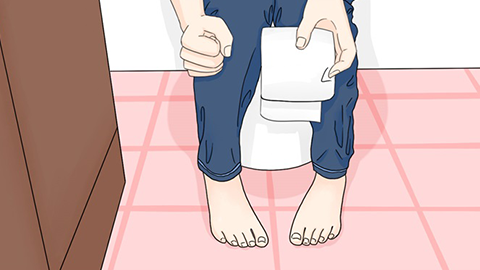What are the differences between hemorrhoids and anal fistulas?
Generally speaking, hemorrhoids and anal fistulas are two different anorectal diseases, which mainly differ in etiology, lesion characteristics, symptom presentation, characteristics of secretions, and treatment methods. A detailed analysis is as follows:

1. Different causes: Hemorrhoids are usually caused by congestion, dilation, and curvature of the venous plexus in the lower rectum or anal canal, often associated with prolonged sitting or standing, constipation, pregnancy, and other factors that obstruct venous return. Anal fistulas are commonly formed after the rupture of perianal abscesses. Perianal abscesses are acute suppurative infections occurring in the soft tissues or spaces around the rectum and anus. After spontaneous rupture or incision and drainage of the abscess, the pus cavity shrinks and forms a channel, one end of which communicates with the anal canal and the other end opens on the perianal skin, forming an anal fistula.
2. Different lesion characteristics: Hemorrhoids are abnormal lesions of veins, presenting as varicose venous masses, and are benign without forming channels. Anal fistulas are chronic infectious channels consisting of an internal opening, fistulous tract, and external opening. The internal opening is usually located in the lower rectum or anal canal, while the external opening is on the perianal skin. Chronic inflammation commonly exists within the fistulous tract.
3. Different symptom presentations: The main symptoms of hemorrhoids include rectal bleeding, anal itching, pain, and prolapse of hemorrhoidal masses. The blood in the stool is typically bright red and does not mix with the feces. The primary symptoms of anal fistulas include recurrent perianal discharge, swelling and pain, itching, and the external opening may temporarily close but later ruptures again due to pus accumulation, causing discharge. These symptoms often recur and rectal bleeding is rarely seen.
4. Different secretion characteristics: Hemorrhoids generally do not produce significant secretions, but when internal hemorrhoids prolapse, a small amount of mucus may be secreted, causing anal dampness. Secretions from anal fistulas are purulent, bloody, or mucoid, with larger volume and a foul, fishy odor. The external opening often has purulent discharge, which contaminates underwear and chronically irritates the perianal skin, causing anal itching.
5. Different treatment approaches: In mild cases of hemorrhoids, symptoms can be relieved through dietary adjustments, improved lifestyle habits, and topical medications. Severe cases require surgical treatment, such as hemorrhoidectomy or stapled hemorrhoidopexy, aiming to remove the varicose venous mass. Once an anal fistula forms, it cannot heal spontaneously. Conservative treatment only alleviates symptoms, and surgery, such as fistulotomy or seton technique, is necessary to remove the fistulous tract and manage the internal opening for complete recovery.
In daily life, it is important to maintain perianal hygiene, avoid prolonged sitting or standing, develop good bowel habits, and prevent constipation and diarrhea to reduce the occurrence of anorectal diseases. Additionally, if anorectal discomfort arises, one should pay attention to observing the symptom characteristics to better understand their own condition.




